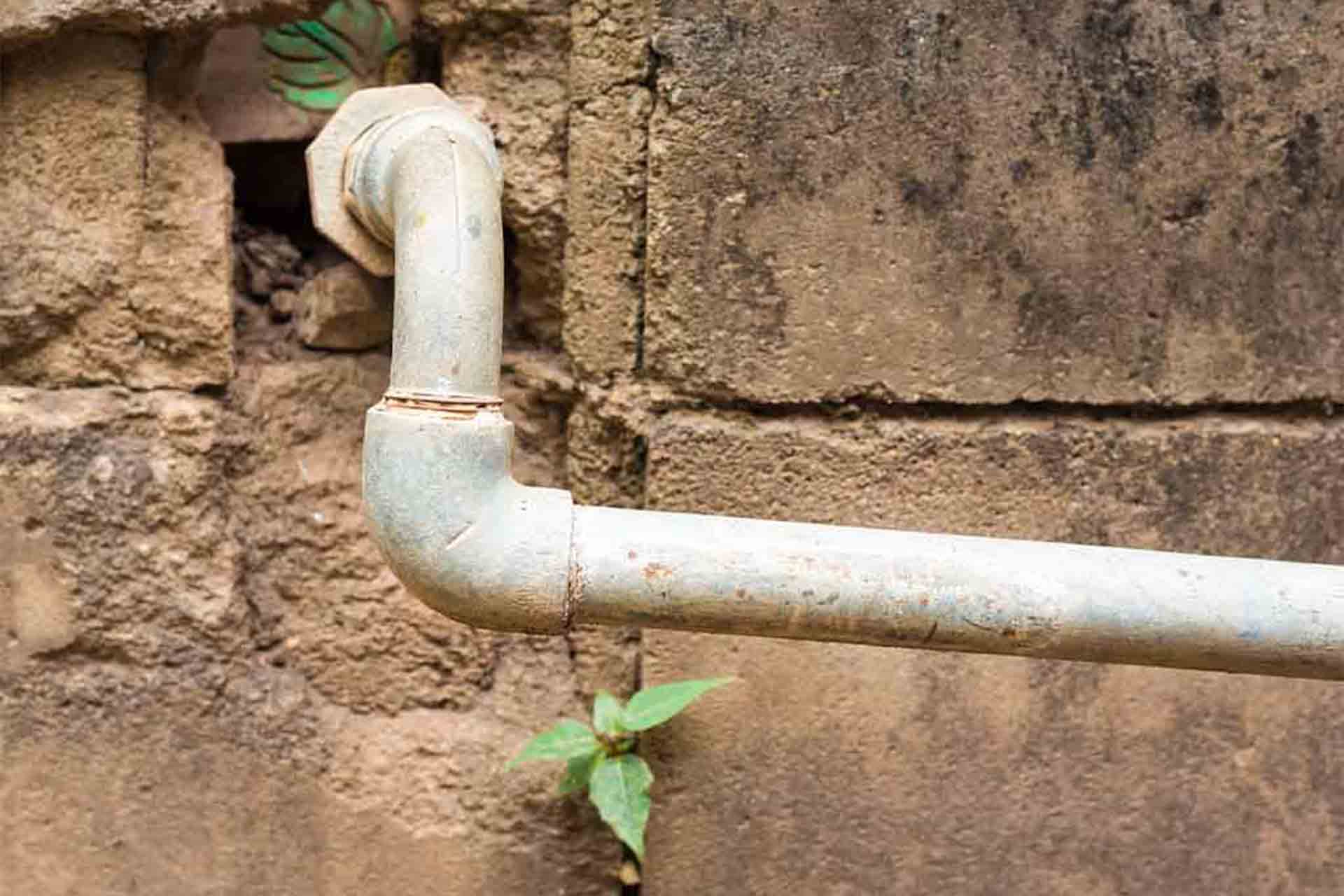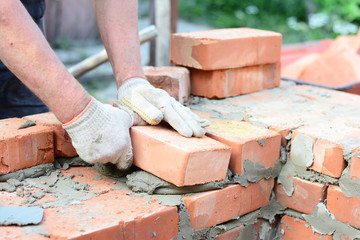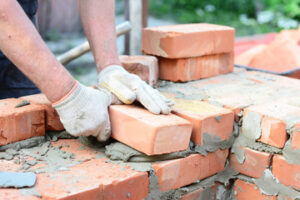Gutter Cleaning is an important service that helps homeowners protect their homes from serious damage. Pro Gutter Cleaning Charleston is especially useful in preventing basement flooding and keeping ice from damaging roof materials.
 Gutter systems help tunnel rainwater off the roof and away from the house but can get clogged with leaves, dirt, twigs, and moss. Clogged gutters also invite rodents and pests that can damage your home significantly.
Gutter systems help tunnel rainwater off the roof and away from the house but can get clogged with leaves, dirt, twigs, and moss. Clogged gutters also invite rodents and pests that can damage your home significantly.
When you’re cleaning your gutters, you need a ladder that will be sturdy enough to support your weight while you’re working. Choosing a flimsy ladder can lead to falls, which can be dangerous for you and anyone below you. The best ladder for gutter cleaning is one that has a wide base and supports your weight without shaking. It should also be able to extend up to the height of your gutters. If you’re cleaning a two-story house, then you’ll need to use a longer ladder.
While many different ladder types exist, aluminum ladders are the safest choice for household use. They’re lightweight and durable, which means they can withstand the wear and tear of regular usage. They also tend to be easier to transport and store, which can make them a better choice for homeowners who frequently move their ladders between locations.
A telescoping ladder is another good option for gutter cleaning. These ladders can extend to any length you need, allowing you to easily reach the gutters without overextending. They also come with non-slip feet and rung locks that help keep the ladder secure while you’re working. Ladder telescoping options also have adjustable legs, which can be helpful if you’re cleaning a house with uneven terrain.
The Louisville Xtend and Climb ladder is a great option for gutter cleaning because it can reach a maximum height of 19.5 feet. This is enough to reach the average height of a one-story house. It’s made with aerospace and aircraft-grade aluminum, which makes it a durable and lightweight ladder that’s easy to carry. Its rungs are designed with non-slip material, and it can hold up to 250 pounds. It also features a convenient carrying handle and locking hinges to ensure safety while you’re working.
Once you’ve chosen the right ladder for your job, it’s important to set it up correctly before you start climbing. You should position the ladder at a 75-degree angle to the ground and always face the ladder when climbing it. You should maintain three points of contact (two hands and a foot or two feet and a hand) at all times while climbing.
Scooping Debris
Although gutter guards are great at preventing most debris from getting into the gutter, there is still some that can get in. Gutter cleaning is the best way to remove this debris. Scooping is typically the best method, and using a plastic scoop is ideal since it will not damage the gutters themselves. A gutter scoop is available at most hardware stores, but an old child’s sand bucket or a simple plastic kitchen spatula can also work.
When you’re working from a ladder, always use good judgment with safety in mind. Make sure that the ladder is firmly on solid ground and not leaning against anything, and don’t reach out too far from the top of the ladder. It’s also a good idea to have a tarp spread underneath your workspace to catch all the gutter gunk and protect any areas below that might be a bit wet or covered in leaves.
If you’re using a ladder, be careful not to drop any of the scooped debris onto your house or lawn below. If you have to, use a bucket or bag that will funnel the debris down to a nearby trash bin. Also, be careful not to scrape the bottom of a metal gutter, as this can introduce areas of rust and eventually cause the gutter to rot or even fall off of the house.
You should wear gloves when working with dirty, rotting gutter debris. These gloves will protect your hands from bacteria and may help to prevent painful cuts if you happen to touch torn metal shards or other sharp objects. It’s a good idea to wear rubber shoes, as well, to avoid slipping or falling when climbing on the roof or ladder.
If you’d rather not risk climbing a ladder, consider hiring a professional to clean your gutters. A small investment in a gutter-cleaning service can save you time and money when it comes to repairing or replacing damaged, clogged gutters and downspouts. It’s worth noting, however, that a little ounce of prevention goes a long way toward reducing the frequency of gutter-clogging and cleaning.
Cleaning the Downspouts
When gutter cleaning, it is important to also clean the downspouts. A downspout directs rainwater to a designated area on the ground, such as a garden or home foundation. Clogged downspouts prevent water from draining as it should, leading to water damage to the roof and walls of a home. It is essential to have clean gutters and downspouts, and homeowners should consider having them cleaned twice a year. This allows them to enjoy the benefits of a well-functioning gutter system without having to deal with the hassle and dangers of climbing a ladder and cleaning the gutters and downspouts themselves.
A common method for removing debris from downspouts is to fit a garden hose with a spray nozzle that allows pressure adjustments and to start the nozzle far from the downspout opening. This way, you can control the force of the stream, ensuring that only small leaf fragments and dirt are sprayed out. Alternatively, you can use a drain cleaner that dissolves clogs in the downspouts. These products can be purchased in hardware stores and at many other retailers.
Another option is to scoop the debris into a bucket as you go. This requires frequent trips up and down the ladder to empty the bucket, so it may be better to ask family members or neighbors if they would like to help you with your gutter cleaning task or hire a professional service.
Once the gutters are completely clean, they are ready for inspection and any needed repairs. It is also a good time to install downspout strainers to reduce the number of clogs that will need to be manually removed.
When a downspout becomes clogged, it’s possible that ice dams can form when snow and ice melt and then refreeze on the roof and gutter. Over time, this can lead to mold growth and leaks in walls and ceilings of a home. This can also lead to wood rot and sagging of the roof. Clogged gutters are an issue that should be addressed before it becomes a major problem. A gutter cleaning service can make this job less daunting, but it is also a project that homeowners can complete themselves using tools already found in their home.
Cleaning the Gutters
Clogged gutters can cause water to back up onto the roof. This can damage roof shingles and lead to cracks in the ceiling or rot in the attic. Gutter cleaning can prevent this and keep rainwater flowing properly through the gutters and away from the house.
The traditional method of gutter cleaning involves climbing a ladder and using heavy work gloves to scoop out the debris from the gutters. The scooped material is then dropped into a bucket on the ground below. The bucket can be emptied as it gets full, and the debris can be placed in a garbage bag or compost bin for later disposal. This method is usually quicker than other methods but still requires a fair amount of climbing and dumping on the part of the gutter cleaner.
Another common gutter cleaning method is to place a plastic tarp or drop cloth on the ground under the gutter. Then the gutter can be cleaned by spraying a hose with water. This will wash off the debris and wash it down into the downspouts. The hose can then be rinsed off to flush the system and remove any remaining debris.
Regardless of the method chosen to clean the gutters, it is important for the professional to use a sturdy ladder that is set up on a level surface. The ladder should also be equipped with a stand and a safety harness. It is also a good idea to work with a partner while cleaning the gutters. This person can help to keep the ladder steady and pass tools up as needed.
While it is tempting to cut the cost of gutter cleaning services by hiring inexperienced, low-wage employees, this can be a dangerous mistake. A well-trained employee who knows how to use a ladder and has experience cleaning homes is always safer and more efficient than an inexperienced worker. In addition, an experienced employee is able to quickly identify any problems and make recommendations for repairs, saving the customer time and money in the long run. In addition to providing safe and high-quality gutter cleaning services, a professional should be licensed and insured for liability coverage in case of any accidental damages during the process.



 Choosing a reputable
Choosing a reputable 
 Testing for water contaminants is usually done using laboratory methods. Lab testing can provide accurate results, but it takes time. For quicker tests, home kits are often used.
Testing for water contaminants is usually done using laboratory methods. Lab testing can provide accurate results, but it takes time. For quicker tests, home kits are often used.
 One of the most important things to look for in a rental home is its location. A good location will help you attract more tenants and charge a higher rent. Tenants want to live in a safe neighborhood and be close to work, schools, restaurants, and community parks.
One of the most important things to look for in a rental home is its location. A good location will help you attract more tenants and charge a higher rent. Tenants want to live in a safe neighborhood and be close to work, schools, restaurants, and community parks. 







